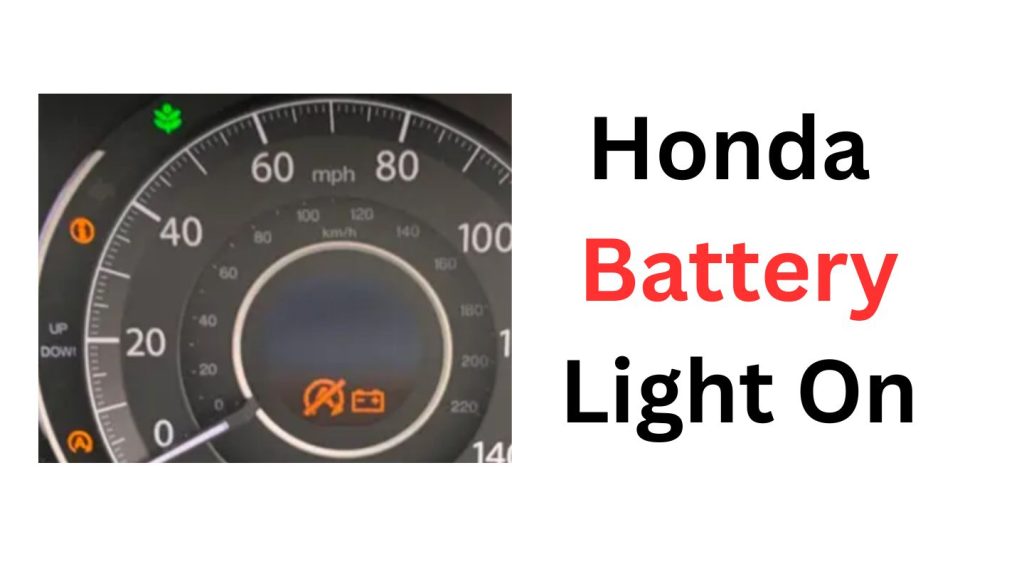If your Honda’s battery light is illuminated, you’re dealing with one of the most misunderstood warning systems in modern vehicles.
Unlike most cars, Honda uses a sophisticated dual-mode charging system that can confuse even experienced mechanics.
After diagnosing hundreds of these issues over two decades, I’ll show you exactly what’s happening and how to fix it.
Why Honda Battery Lights Are Different
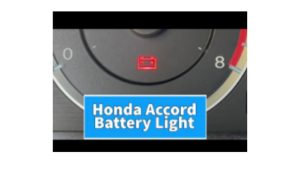
Here’s what most people don’t realize: Honda’s charging system operates in two distinct modes. In low-load conditions, your alternator only produces 12.4-12.9 volts – not the typical 14+ volts you’d expect.
This isn’t a problem; it’s intentional fuel-saving engineering that reduces engine load by up to 10%.
The system switches to high output mode (14.4-14.9V) only when needed. This complexity means your battery light might illuminate even when everything is functioning correctly, or stay off when there’s actually a problem brewing.
When to Take Honda Battery Light Seriously
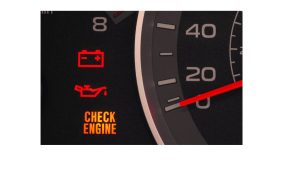
Immediate attention required:
- Light stays on continuously while driving
- Dimming headlights or flickering dashboard lights
- Difficulty starting, especially after short trips
- Warning appears with other electrical issues
Less urgent (but still investigate):
- Light flickers briefly during braking
- Intermittent illumination lasting 5-10 seconds
- Light appears only at idle in certain conditions
I’ve seen too many Honda owners ignore intermittent warnings, only to get stranded later. Even brief illumination indicates a communication problem between your charging system components.
The 7 Main Causes of Honda Battery Light Issues
| Cause | Symptoms |
|---|---|
| Electronic Load Detector (ELD) | Intermittent light, P1298 code |
| Alternator Diode Failure | Constant light, whining noise |
| Battery Sensor Malfunction | Light after startup, communication errors |
| Wiring/Ground Issues | Light during braking/turning |
| PCM Communication Error | Multiple warning lights, codes |
| Voltage Regulator | Erratic voltage, flickering lights |
| False Positive Testing | Light on but system working |
When Your ELD is the Culprit
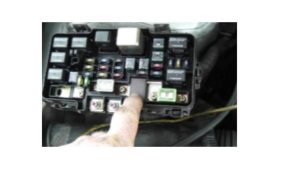
The Electronic Load Detector is Honda’s secret sauce – and biggest headache. This $5 component buried in your fuse box monitors electrical current and tells the ECM when to increase charging output. When it fails, you’ll typically see:
Classic ELD symptoms:
- Battery light appears for 10-15 seconds, then disappears
- Light triggers during electrical load changes (turning on A/C, headlights)
- Diagnostic code P1298 stored in memory
I’ve replaced dozens of these. The frustrating part? Honda originally required replacing the entire fuse box (hundreds of dollars) when only a tiny sensor was defective.
Now you can access and replace just the ELD, but expect to disassemble multiple fuse box layers.
Pro tip: The ELD from a 2008 Accord often works in other Honda models. Keep the part number handy: varies by year, but search “Honda ELD electronic load detector” with your model year.
When Alternator Testing Goes Wrong

Here’s where most people get burned: AutoZone, O’Reilly’s, and similar testers will show “voltage regulator failed” on perfectly good Honda alternators. Why? They don’t account for Honda’s dual-mode system.
The testing trap: If you test your alternator without electrical load, Honda’s system stays in low-output mode (12.5V). The tester interprets this as regulator failure and recommends a $400 alternator replacement you don’t need.
Correct testing procedure:
- Turn on headlights AND air conditioning
- Rev engine to 2000 RPM
- Then run the alternator test
This forces the system into high-output mode, giving accurate readings. I’ve saved customers thousands with this simple knowledge.
When Battery Sensors Cause Headaches
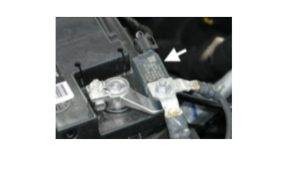
Modern Hondas monitor battery health through sophisticated sensors. When these fail, your car’s computer gets confused about charging needs.
The battery sensor (usually on the negative terminal) can trigger warning lights even with a perfect battery and alternator.
Replacement seems straightforward, but here’s the catch: Honda’s system needs time to “relearn” the new sensor. You might replace it and still see warnings for days or weeks until the ECM adapts.
Some symptoms I’ve traced to battery sensor issues:
- Start-stop systems refusing to engage
- Battery light appearing exactly 5 seconds after startup
- Communication error codes (P16E3 is common)
When to Suspect PCM Problems
Sometimes the computer controlling your charging system develops communication errors. This is expensive to fix but relatively rare. Before condemning your PCM, verify:
- Multiple electrical systems acting up simultaneously
- Diagnostic codes pointing to communication failures
- All other charging components test good individually
Honda has issued recalls and service bulletins for PCM issues in certain model years. Check if yours qualifies before paying for repairs.
When Normal Operation Looks Like Problems
This catches everyone off-guard: Honda’s system intentionally runs at lower voltage under specific conditions.
If you’re driving between 10-45 mph, engine under 3000 RPM, coolant warm, A/C off, and low electrical load, seeing 12.5-12.7 volts is completely normal.
Many Honda owners panic when their voltage gauge shows lower readings than other cars. Don’t. Your system is working exactly as designed, prioritizing fuel economy over constant high charging.
My Professional Recommendations
Start with the cheap fixes:
- Clean battery terminals thoroughly
- Test with proper electrical load applied
- Check for loose connections at alternator
- Scan for diagnostic codes (all modules, not just engine)
When to call professionals:
- Multiple warning lights appearing together
- Car dies while driving
- Battery won’t hold charge overnight
- Burning smells from engine bay
Brand recommendations from experience:
- Alternators: Denso only. Honda OEM units have poor longevity
- Batteries: Stick with Honda or equivalent group size
- ELD units: OEM Honda parts – aftermarket versions cause more problems
When Prevention Beats Cure
Honda’s charging system complexity means small problems become big ones quickly. I recommend:
- Annual inspection: Have charging system tested properly (with load)
- Keep connections clean: Battery terminal corrosion kills sensors
- Don’t ignore intermittent warnings: They indicate developing problems
- Use quality parts: Cheap alternators create more issues than they solve
The bottom line? Honda’s battery light represents a sophisticated system that saves fuel but requires Honda-specific knowledge to diagnose correctly.
Most general repair shops don’t understand these systems well enough to avoid expensive misdiagnosis.
When your Honda’s battery light illuminates, don’t panic – but don’t ignore it either. With proper diagnosis, most issues are surprisingly affordable to fix.
The key is understanding that your Honda doesn’t behave like other cars, and neither should your diagnostic approach.

